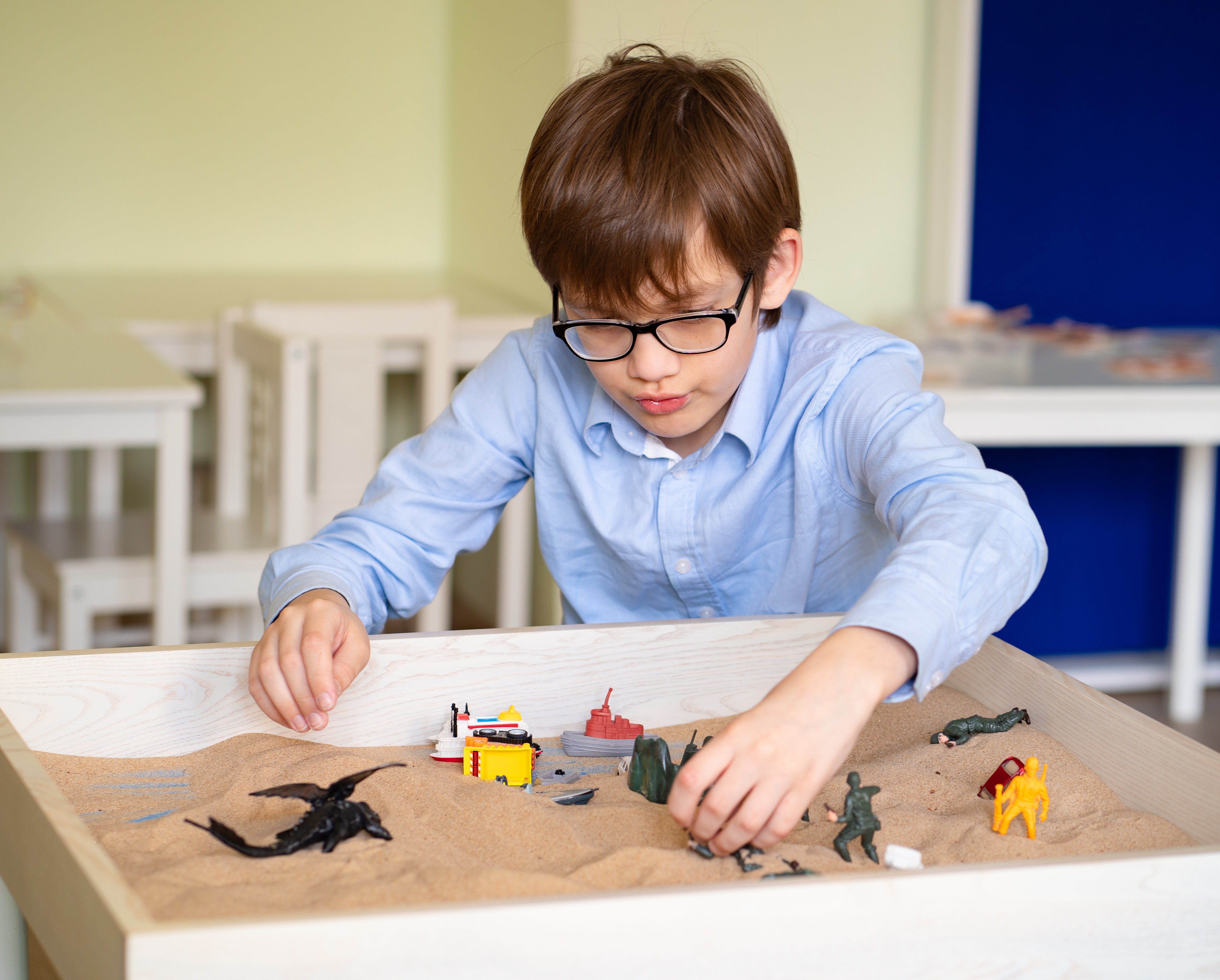Transform Your Story with Sandplay Therapy
Sandplay therapy is a nonverbal, therapeutic intervention that utilizes a sandbox, miniature figures, and sometimes water to create scenes reflecting a person's inner thoughts, struggles, and concerns. This hands-on approach allows individuals to construct their own microcosms, providing a visual representation of their internal symbolic world.
Developed by Swiss psychotherapist Dora M. Kalff, Sandplay therapy integrates principles from Carl Gustav Jung's analytical psychology and Margaret Lowenfeld's World Technique. In a "free and protected" space provided by a trained Sandplay therapist, clients use sand, water, and miniature objects to express and explore their internal experiences.
This therapeutic method is effective across various age groups, including children, adolescents, and adults. It is particularly beneficial for individuals who have experienced trauma, as it offers a safe environment to express feelings that may be difficult to articulate verbally.
By engaging in Sandplay therapy, clients can externalize and process complex emotions, facilitating healing and personal growth.

Sandplay Therapy
Sandplay therapy is a nonverbal, therapeutic intervention that utilizes a sandbox, miniature figures, and sometimes water to create scenes reflecting a person's inner thoughts, struggles, and concerns. This hands-on approach allows individuals to construct their own microcosms, providing a visual representation of their internal symbolic world.
A series of Sandplay images in the sand tray create an ongoing dialogue between the conscious and unconscious aspects of the client's psyche, which activates a healing process and the development of the personality
Sandplay Therapy
- Unique approach to therapy. Healing Through Play and Creativity
- Safe and Contained Space
- Versatile and widely used therapeutic approach
- For all ages
Sandplay Therapy Overview
Sandplay therapy is successful because it provides a safe, nonverbal, and symbolic way for clients to express and process deep emotions, especially when words are insufficient.
ContactNonverbal Expression
The use of sand and miniature objects allows clients to communicate their inner world without needing to articulate it verbally. This is especially helpful for children, trauma survivors, or individuals struggling with emotional expression
Safe and Contained Space/Integration of Trauma and Emotional Healing
The sand tray acts as a defined space where clients can freely explore thoughts and feelings in a protected, judgment-free environment.
Sandplay helps clients externalize and work through painful experiences, leading to emotional resolution and personal growth
Access to the Unconscious Mind
The process of creating scenes in the sand helps reveal unconscious thoughts, patterns, and unresolved conflicts, similar to how dreams function in therapy
Cultural Sensitivity
This approach is well-suited for clients from various cultural, social, and economic backgrounds. Sandplay therapy respects and incorporates clients' cultural backgrounds and personal values, making it adaptable to diverse populations.
Symbolism and Metaphor
Miniature objects represent aspects of the client’s life, emotions, and inner struggles, allowing for deep exploration and integration of experiences
Therapist's Role as Witness
The therapist provides a supportive presence, encouraging the client’s self-discovery without directing or interpreting too soon. This fosters empowerment and self-awareness
Neuroscience and Somatic Engagement
The sensory experience of touching sand can have a calming effect, engaging the nervous system and promoting regulation of emotions
